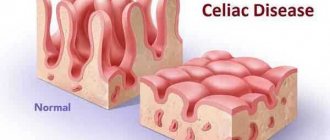Now, during the pandemic, it has become popular to buy various vitamins and their complexes to prevent colds. Mostly people purchase vitamin C, zinc, vitamin D without first consulting a doctor and without reading the instructions. However, neglecting the rules of administration and using these drugs in large quantities can lead to an overdose of vitamins.
Can taking nutrients really harm your health? In this article, apteka24.ua will look at how the most popular vitamins and microelements are useful and what an overdose of them can lead to.
Biological role of vitamin C
The role of ascorbic acid is great for the whole organism. Let's name the main functions of the vitamin:
- An excellent antioxidant. The substance blocks the destructive process of lipid oxidation in tissues, and also slows down aging and protects against diseases.
- Strengthens the immune system, making it more resistant to harmful microorganisms, especially viruses.
- Strengthens joints and bones, improves the formation of connective tissue.
- Promotes better absorption of folic acid, vitamins A and E, as well as iron, making these components more active.
- Improves the condition of the skin. By counteracting harmful organisms, it reduces the appearance of pimples and acne.
- Strengthens blood vessels and reduces bleeding.
- Stops the growth of cholesterol plaques, slows down the development of atherosclerosis.
- Neutralizes many toxic substances, including tobacco smoke, alcohol and drug metabolites. Promotes detoxification of the body.
- Reducing the impact of stress on the human body.
- Promotes faster healing of damaged tissues.
- Characterized by a brightening effect on the skin.
Consultation with an endocrinologist is a vector for your internal balance!
Liberanskaya Natalya Sergeevna
— endocrinologist, doctor of the highest category with more than 10 years of experience. Natalya Sergeevna sees patients with a variety of problems and issues within her specialization - excess weight, diabetes, thyroid problems, increased fatigue and drowsiness, pregnancy, menopause, metabolic disorders and endocrine glands.
Natalya Sergeevna is the author of the popular blog @doctor_liberanskaya, in which she regularly gives subscribers advice on maintaining health and therapy. All recommendations are based on the principles of evidence-based medicine and our own professional experience.
From 2021, Doctor Liberanskaya Natalya Sergeevna
accepts patients at the Pirogov Clinic - you can also undergo a consultation with an endocrinologist of the highest category.
To make the appointment informative and useful for you, we recommend taking the following tests:
- List of endocrinological tests
You can undergo the examination quickly, without queues and at a time convenient for you in our clinic.
Thanks to the latest diagnostic equipment and a team of qualified specialists from the laboratory of the Pirogov Clinic, you can be confident in objective and reliable results.
Vitamin C deficiency: signs
In order for vitamins to have a positive effect on the human body, they must be contained in it in optimal quantities, without exceeding or decreasing the norm. Let's first look at the signs of ascorbic acid deficiency:
- A significant decrease in protective functions, a person’s illness (usually such people do not have time to cure one disease before another “clings” to them).
- The course of the disease becomes more complicated and its duration increases.
- Young children with ascorbic acid deficiency may lag behind their peers in development (both physically and mentally).
- Increased irritability or, conversely, apathy towards everything, lack of emotion.
- Painful sensations in the joints, discomfort even with normal movements.
- Memory impairment.
- Fragility of the joints, which is manifested by the appearance of hematomas in the muscle, skin and subcutaneous tissues.
- Bleeding gums.
- Increased bleeding from the nasal cavity.
- Development of caries.
- Anemia.
- Jumps in blood pressure and heart rate.
- Swelling of the joints.
- Scurvy (indicates a high vitamin C deficiency). Subsequently, ulcers appear that do not go away for a long time.
- Infectious complications that, if left untreated, can develop into sepsis or even result in death.
Zinc
This microelement is not produced in the human body and is not stored there, so it must be obtained from the outside. Zinc is symbolized by the symbol Zn. It can be included in combination products or sold separately in the form of tablets and capsules.
Effective preparations that contain zinc:
- Zincteral;
- AlfaVit Classic No. 120;
- Revalid No. 30;
- Zn+Mg+B6 150 No. 60;
- OmegaBalance Zn PLUS.
Zinc: benefits of the chemical element
Zn is involved in the activation of T-lymphocytes (special cells of the immune system), as a result of which the immune system quickly responds to foreign bodies and cancer cells. With a lack of zinc, the body's susceptibility to various pathogens increases. In addition, some experimental evidence suggests that taking zinc within 24 hours of the onset of symptoms of a cold will speed up its resolution.
Taking this microelement helps with diarrhea. A study in Bangladesh found that a 10-day course of Zn was effective in treating bowel disorders and helping prevent further attacks. This is why WHO recommends taking zinc for diarrhea.
The chemical element in question plays an important role in maintaining the integrity and health of the skin. Patients with existing wounds or ulcers have a deficiency of zinc in the blood. Swedish studies have shown that taking Zn in dosage form promotes the healing of ulcers, wounds and suppresses inflammatory processes in the body. It is also found in some skin creams.
It's important to note that zinc prevents damage to retinal cells, which can slow the progression of age-related macular degeneration and protect against vision loss. In addition, this element can strengthen memory and improve sperm quality, reducing the risk of male infertility.
Daily value of zinc
Different age groups need different amounts of zinc per day.
Recommended daily doses of Zn:
- girls and women over 19 years old - 8 mg per day;
- boys and men over 19 years old - 11 mg per day;
- pregnant women - 11 mg per day;
- women during lactation - 14 mg per day.
The maximum amount of zinc that can be consumed within 24 hours is 40 mg.
Zinc overdose
If a person takes more than 40 mg of the microelement in question, the following side effects may occur:
- diarrhea;
- allergic reaction;
- pain in the lumbar region;
- increased heart rate;
- vomiting and nausea;
- decreased immunity;
- headache and dizziness;
- the appearance of ulcers in the throat and mouth (neutropenia);
- abdominal cramps;
- loss of appetite;
- lowering the level of “good” cholesterol in the body.
Also, consuming a large dose of zinc can interfere with the absorption of other elements such as iron and copper.
Interaction with other substances and drugs
Penicillamine is an antirheumatic drug. This drug is used by patients with rheumatoid arthritis and Wilson-Konovalov disease (hereditary disease of the central nervous system). Concomitant use of zinc and this drug may reduce the absorption and effectiveness of penicillamine.
Antibiotics . Zinc in tablets reduces the absorption of the antibiotic into the blood, so less of it enters the body. To prevent such an outcome of simultaneous administration, it is necessary to drink Zn at least an hour after taking antibiotics.
Thiazide diuretics . These blood pressure medications increase the amount of zinc excreted in the urine, so taking zinc with diuretics is not recommended.
Signs of excess vitamin C
You cannot exceed the recommended level of ascorbic acid in the body, since this is also harmful to human health.
Hypervitaminosis of ascorbic acid is manifested by the following unpleasant symptoms:
- cramps in the stomach;
- severe heartburn;
- nausea and vomiting occurring literally every 30 minutes;
- dizziness that does not go away even after the position has been changed to horizontal;
- weakness and chronic fatigue, but at the same time showing signs of insomnia;
- migraine attacks;
- skin rash;
- diarrhea or constipation.
In children, an overdose of ascorbic acid is manifested by redness of the skin and severe itching. Also, in young patients, nervous excitability increases noticeably, which can even develop into aggressive reactions.
References
- Kodentsova, V.M., Namazova-Baranova, L.S., Makarova S.G. National program to optimize the provision of vitamins and minerals to Russian children. Brief overview of the document. Pediatric pharmacology, 2021. - T. 14 (6). — pp. 478–493.
- Sokolova, N.G. Pediatrician's Handbook. - M.: Astrel, 2013. - 480 p.
- Shikh, E.V., Makhova, A.A. Possibilities of regulating cognitive function in children using vitamin-mineral complexes, 2012. - No. 24. - P. 1188.
- Chambial, S., Dwivedi, S. Shukla, K. et al. Vitamin C in Disease Prevention and Cure: An Overview, 2013. - Vol. 28(4). P. 314–328.
Daily requirement for vitamin C
The average daily requirement of an adult for ascorbic acid ranges from 60-100 mg (the exact figure depends on individual needs). If you need to compensate for a vitamin deficiency, take from 500 to 1500 mg per day.
Interestingly, one smoked cigarette breaks down up to 30 mg of ascorbic acid in the body. And negative emotions lasting 20 minutes or more lead to the loss of 300 mg of vitamin.
And cooking foods reduces their vitamin content. So, when cooking cabbage, up to 50% of the beneficial element is lost in it, and when frying, all 85%. Therefore, to preserve nutrients, it is recommended to bake foods.
Fresh fruits and vegetables contain a substance called ascorbinase, a component that destroys vitamin C. Therefore, for example, baked apples contain more ascorbic acid than fresh ones. The same goes for sauerkraut.
Mistake #5. Ignore Omega-3
Why take Omega-3
polyunsaturated acid? It preserves visual acuity, beauty and protects the vascular endothelium from damage. The brain is 30% composed of Omega-3 fatty acids. The substance is not synthesized in the body independently. Unfortunately, even adherents of the Mediterranean diet do not always get enough Omega-3. The fatty acid is found in fatty fish, flaxseed, sea buckthorn and mustard oils.
Adults should take 2 grams of Omega-3 daily—or more. The exact dosage can be selected after an analysis called the Omega-3 index
.
The advantage of Omega-3 capsules over the same red fish is the good purification of fatty acids from harmful impurities that we can receive along with fish caught in a pond.
What products contain
The leader in vitamin C content can rightfully be called rose hips. In second place you can put currants, Brussels sprouts and sea buckthorn. There is also a lot of ascorbic acid in the following foods:
- bell pepper;
- kiwi;
- radish;
- tomatoes;
- sorrel;
- cabbage;
- horseradish;
- gooseberry;
- cauliflower;
- green pea;
- wild garlic;
- porcini mushrooms and chanterelles;
- citrus.
In spring, the best source of vitamin will be young nettle. It is added to pies, casseroles, omelettes, and a traditional dish made from nettles is green borscht.
The concept of ascorbic acid
The chemical formula of ascorbic acid is C6H8O6. The powder is no different from other vitamins: it is soluble in water, resistant to fat, has a sour taste, but is odorless. If stored improperly, it disintegrates and resembles a powder in its structure.
At what temperature is vitamin C destroyed? The destructive process begins at 60 degrees, and breaks down into particles at 100 degrees.
Chemists have proven that vitamin molecules are similar in composition to crystalline sugar, but there are still significant differences. Artificially synthesized vitamin C appeared in the food industry, which immediately became a popular food additive under the number E315. It does not have the same beneficial properties as the original, although it is much cheaper.
History of discovery and physicochemical properties
Vitamin C is a water-soluble organic compound. You can often hear its other name - ascorbic acid (Acidum ascorbinicum). Is it so? Vitamin C is the biologically active L-isomer of ascorbic acid. The human body does not synthesize or accumulate this vitamin. Therefore, it has high biological value and should be present in the diet of any person every day.
!
The name comes from the Latin word “scorbutus” - scurvy.
The history of the discovery of this organic compound is associated with this disease. During the times of travelers Vasco da Gama, Magellan and Cook, when long voyages were made for the purpose of geographical discoveries, sailors were faced with a dangerous and fatal disease - scurvy. The reason for this was a lack of vitamin C (vitaminosis). The disease scurvy leads to disorders that cause pathologies of connective tissue, as a result of which it loses its strength. Symptoms of the disease are as follows: mobility of teeth, pain in the limbs, increased tendency to bleed, etc. At that time, there was no information about vitamin C, however, thanks to the observation of sailors in the life of Indian tribes, a solution was found. The salvation was a healing decoction - an aqueous extract of pine needles, which eliminated the lack of substances in the body.
Vitamin C
In the middle of the 18th century, in 1747, the chief physician of the naval hospital, a surgeon by training, James Lind conducted the first clinical study by experimenting on twenty sailors infected with scurvy. While searching for a cure for the disease, he added various foods to the diet of several groups of patients. It was possible to prevent the progression of the disease only in those sailors whose daily diet included citrus fruits - oranges and lemons. At that time, there was an opinion that scurvy was an infectious disease, so for quite a long time the results of the study and the scientific treatise “Treatment of Scurvy” by D. Lind were subject to severe criticism.
Participants of polar expeditions in Antarctica, on the continent of Antarctica and in the Southern Ocean also suffered from scurvy. In order to prevent the disease, members of three Russian Arctic expeditions G. L. Brusilova, G. Ya. Sedova and V. A. Rusanova used warm bear blood.
!
Vitamin C was isolated in its pure form in the late 20s of the 20th century by the American biochemist and Nobel laureate Albert Szent-Györgyi von Neugyrapolt.
And after 5 years it was already proven that vitamin C is necessary for the body to prevent the development of scurvy. Since that time, a large number of experiments and scientific studies have been carried out in order to determine the exact clinical effectiveness of this L-isomer of ascorbic acid.
Vitamin C is a fine white crystalline powder with a specific sour taste and complete absence of odor. Chemical name according to the nomenclature system: 2,3-dehydro-L-gulonic acid gamma-lactone. Chemical formula – C6H8O6. All existing vitamins of group C have 4 spatial forms (stereoisomers) with completely similar chemical formulas. Description of physical properties: soluble in water, and less soluble in other liquids. The resulting solution is unstable and the vitamin C in it rapidly decomposes. Crystalline ascorbic acid in dry form is stable and can be stored for a long time. Characteristics: melting point – 190°C, boiling point – 553°C, molar mass – 176.12 g/mol, easily destroyed by light, heat treatment and smog.
Beneficial properties of vitamin C









